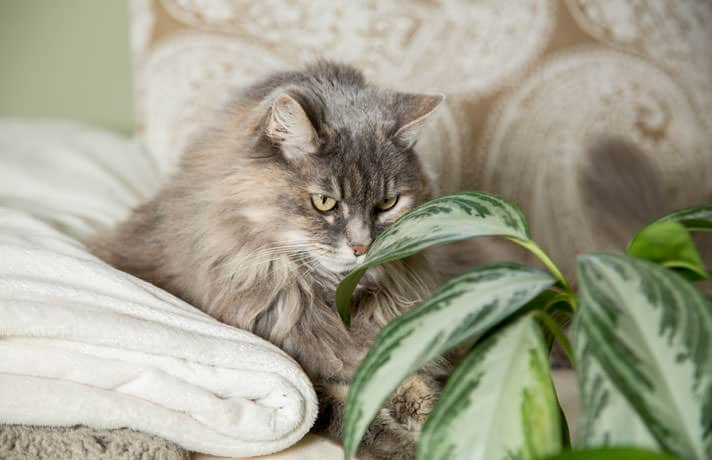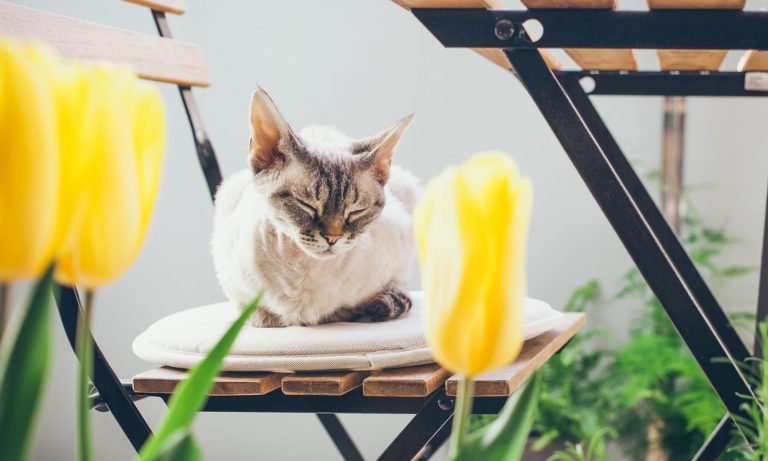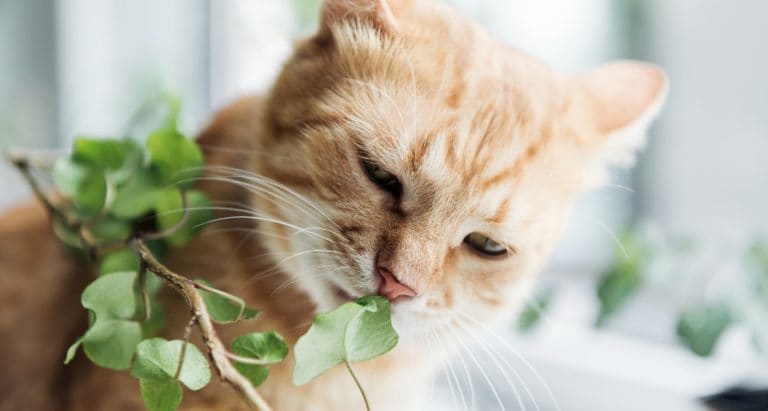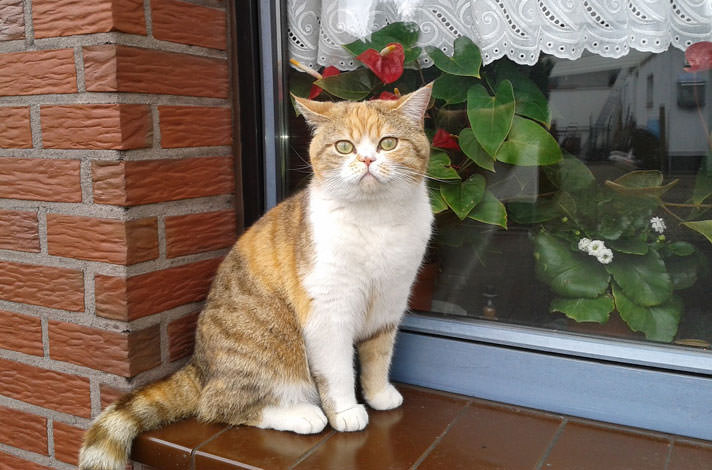You’ve adopted a furry feline friend, she is a wonderful companion and all is going well. It’s all cuddles, purrs and playtime. That is, until you begin to notice little chew marks on your plants or evidence that your cat has been digging in the planter.
Now you’re wondering if there is a way to have plants in your home without seeing them become your cat’s favorite snack food and/or play toy. You’ll be happy to know that with a little planning and some strategies designed to keep kitty away, you can have your plants and cat, too.
It’s All About Placement
Where you place your plants is an important part of the strategy for keeping your cat away from your plants. But where can you put them to keep them safely away from teeth and claws? After all, cats can, and do, climb up to high places, so placing your plants on a high shelf might not do the trick.
One safe place for your plants is in a hanging basket. Plants hung in high places with nothing around for your cat to climb on to reach them will eliminate the problem. You may see her sitting underneath the plant, looking longingly at the leaves and vines. But without a way to climb up, your plants will be safely out of her grasp. This is an especially good strategy if you have plants that might be poisonous to your cat, but you caught those when you cat-proofed your home, right?
Make The Plants Unappealing
Another good strategy is to make the plants unappealing to your cat’s taste buds. Cats often enjoy the taste of plants, which is why they return again and again to nibble. Because cats don’t like the taste or smell of citrus, mix together water with lemon, lime or orange juice, and then spritz this on your plants. Often, the smell of the citrus is enough to keep your cat away. If she does nibble, one taste of citrus should prevent further plant snacking.
If the smell and taste of the citrus don’t keep her away, try using vinegar. Spraying vinegar on your plants might harm them, so soak cotton balls in a water and vinegar solution and place them on top of the soil. The smell of the vinegar will keep your cat away and break her habit of eating or playing in the plants.
Sometimes it’s not the eating of the plants that is the problem, but rather it’s the planter itself that attracts your cat. You may find her digging in soil, thinking the dirt is another litter box for her. Be sure the soil your plant is potted in does not resemble the texture of her kitty litter. Also, try using decorative rocks on top of the soil to derail your cat’s ability to dig into the planter.
Give Your Cat Her Own Plants
If your cat simply cannot resist the tender leaves of young plants, then give her a garden of her own to eat. There are plenty of tender, young plants you can offer to your cat that are safe, and even good, for her. Catnip is, of course, the plant of choice in the feline world, along with pet grass you can find at a pet supply retailer. Some cats are also attracted to the scent of mint, so your cat might also enjoy a peppermint plant. Put these plants in some of your cat’s favorite places to lounge, and she’ll soon forget all about your houseplants.
Schedule Daily Cat Playtime
Often it’s the motion of swinging vines and leaves that your cat cannot resist. Cats who are bored and have pent-up energy will attack plants with long dangling vines in the same way they would go after prey. Daily play sessions with your cat will help alleviate her boredom. Use a feather wand or fishing pole-type cat toys that she can chase as you wave it around. It should only take five to 10 minutes of intense vigorous play to get her to the point of exhaustion. Also, be sure your cat has enough solo cat toys to keep her engaged and away from the plants (and other trouble) while you are at work.
Distraction And Aversion Techniques
If you do find your cat going after your plants, distracting her from her mission is the goal. Toss a soft toy to her so she’ll be distracted and go after the toy instead. If you have no toy handy, clap your hands and loudly say her name or “No!” to get her attention. She will stop what she was doing or forget what she was about to do. Use of a squirt from a water bottle to deter cats from going after your plants is a last resort to be used only when all else fails; and never aim for the face.
Once your cat learns that eating and playing with your plants is unacceptable and even unpleasant, she will stop doing it. It will take time and patience for her to learn, but with consistency and repetition, she will forget all about how fun and delicious she once found your plants.
By: Rita Reimers
Featured Image: Gina Cioli/I-5 Studio
Share:









